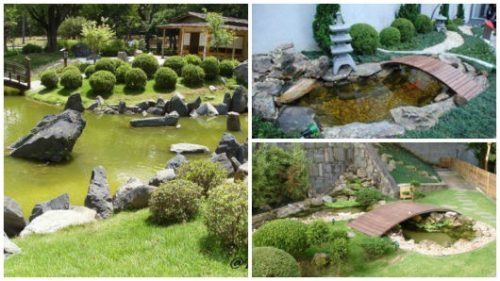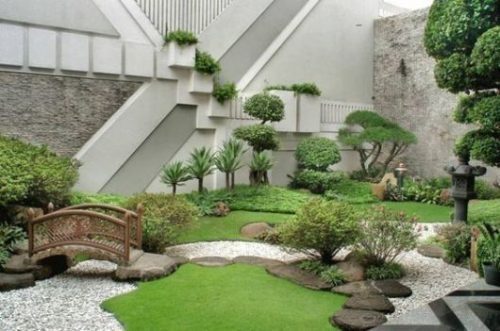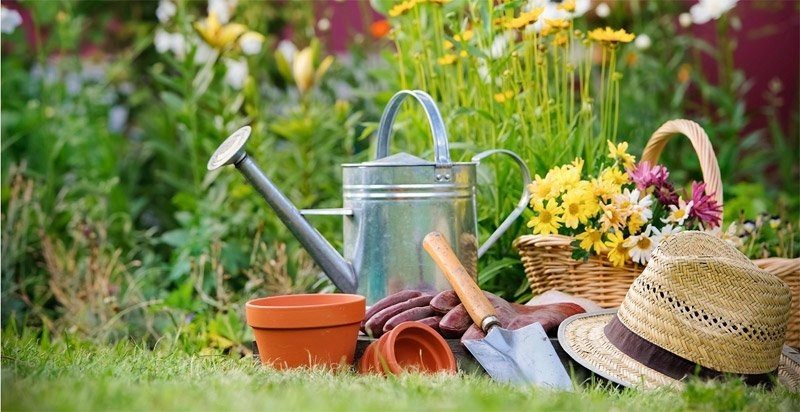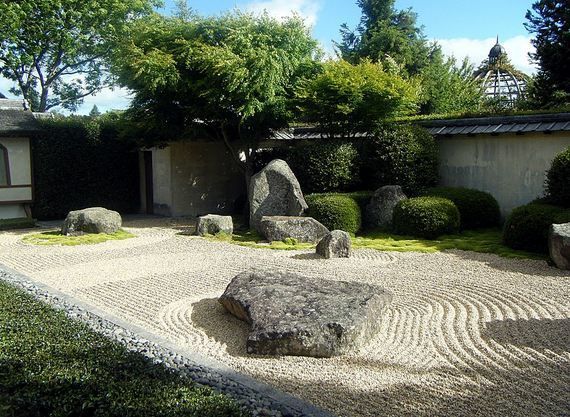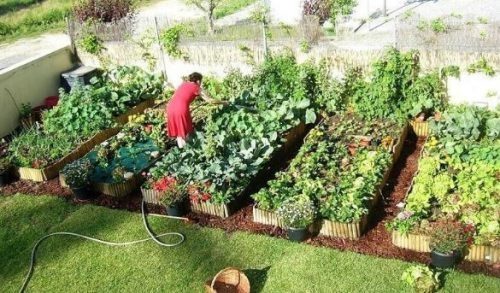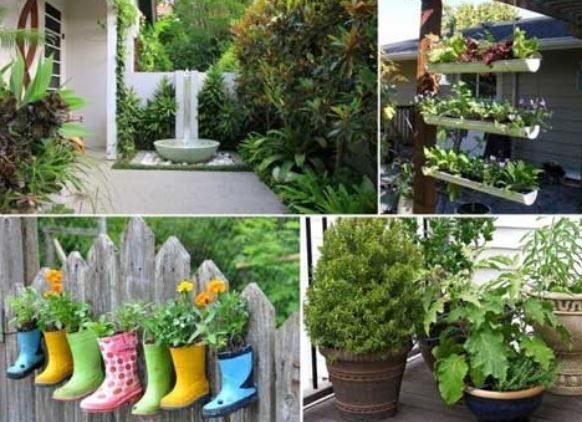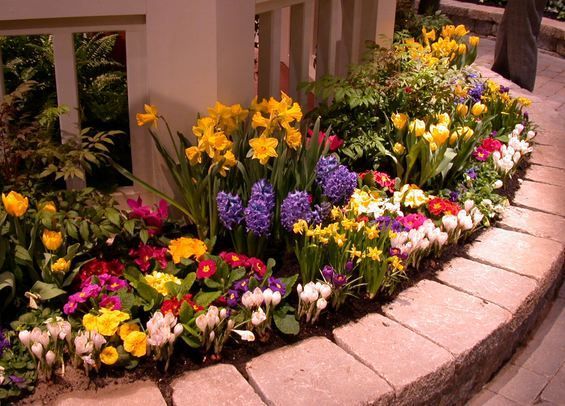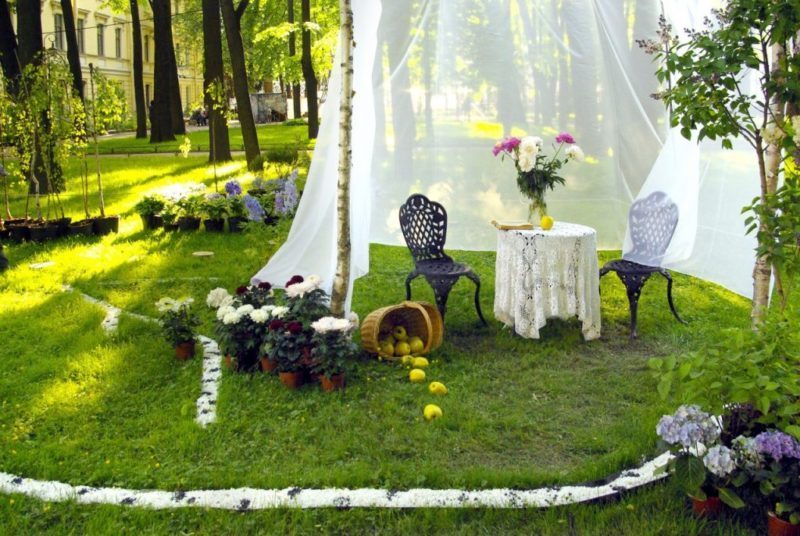The oriental gardens, Chinese and Japanese, are a space in nature very directed to the meditation. Thus, while in the West we often associate gardens with leisure and social life, the peoples of the West regard them as spaces of harmony, calm and spiritual search. For this reason, everything in Japanese gardens is placed in an order, that of Feng Shui, in order to create harmony and positive energies. Nothing is left to chance and all the elements typical of a Japanese garden, namely water, stones, and bamboo, have a symbology of their own.
If you have already strolled through a Japanese garden you will surely remember the tranquility that this environment conveys. And each element that composes it is exactly for that, to create a zen space and with energies to transmit that peace. And if the desire to have a Japanese garden becomes more and more booster, we separate ideas of how to decorate the space and tips on how to create and what elements to use in the garden; so you can recreate this zen space at home and have a quiet and cozy environment to reflect.
Steps to follow:
- The Japanese gardens are typically large and located in spaces with hills and lakes. To the Eastern peoples, they represent one of the most sublime forms of art, because they reflect the essence of nature and allow man’s connection with it. While maintaining the general features, it is possible to recreate a Japanese garden in your home, although the available space is small.
- Another feature of Japanese gardens is that the elements should give the illusion that they were not placed there by human hand, as in English gardens, but with the concern of forming a harmonious composition that conveys calm and does not overwhelm the landscape. For this reason, when making a Japanese garden you should define the spaces for each of the elements. Reserve a place for the water element, arrange the trees separately, create a space for the stones and plan where you will place some statues or sculptures, which should be next to shrubs.
- Start by sowing grass all over the space, preferably Japanese grass ( Zoysia japonica ), or emerald grass, as it is called in Brazil. Green is the predominant color in Japanese gardens, which is combined with small touches of colors that trees and shrubs confer. In a Japanese garden, the trees should keep their appearance throughout the year and preferably last a long time in order to pass from generation to generation, conveying an idea of continuity and inheritance. Opt for the Japanese cherry- prunus ( Prunus campanulata ), magnolia or tree tulip ( Magnolia liliiflora ), Acer with green leaves ( Acer palmatum ), Japanese pine ( Pinus thunbergii) and bamboo ( Phyllostachys pubescens ).
- In a Japanese garden, the stones fulfill their functions: decorative and utilitarian. In the first, they are arranged a little throughout the space but especially close to the element water. As a utilitarian function, they serve as a path, and there are two types of stone path: Nobedan, with stones arranged in a mosaic, of various sizes but all uniform at the top; and Tobiishi, with stones of larger sizes, irregular and further apart. This last type of path contains a symbolism: because its stones are irregularly shaped, we are obliged to pay attention to the walk, concentrating on the moment and leaving aside the daily problems.
- Regarding the element water, this may arise sub form of lake, river, fountain or waterfall. In any of the options you choose, be sure to include Nishikigoi-koi carp , typical of this kind of gardens and symbol of fertility and prosperity. To decorate, erect a rounded bridge over the lake or create a path in it, which symbolize self-knowledge and evolution to reach a higher level in spiritual terms. Around the water element, include soapstone , one arranged in the vertical position to symbolize the father, another in the horizontal position to represent the mother and the remaining smaller ones, who will be the descendants.
- Within the Japanese garden itself, you can book space for a small Zen garden. They are very easy to recreate and only need two elements: stone and sand. Start by laying white sand in a small area and then give it wavy shapes with a rake, a practice of ancient Buddhist monks. In the middle, arrange several stones separated from each other. The symbolism of this zen garden is very interesting: the sand represents the sea and the rocks, islands. This simple decorative element will contribute to the sense of calm and tranquility that one wishes to create in a Japanese garden.
- Another very important and important element in Japanese gardens is the lanterns. The most typical are called Yukimi and come in the form of cottages that can measure up to 1.20 m. Arrange them close to the water, along with the paths of stones and in the places of conviviality. Like the other elements present in a Japanese garden, the lanterns also have their meaning: they symbolize fire and light, brightening the mind of those who walk in the garden and promoting spiritual enlightenment.
- As noted at the beginning of this article, Japanese gardens serve the purpose of meditation, contact with nature and relaxation. For this, it will be useful if you can install in your garden a space similar to the old Japanese wooden houses with shoji doors and windows, which act as a natural frame for the view of the garden. This space will serve for meditation and also as a tea house since tea making is a very Japanese habit and quite relaxing.

